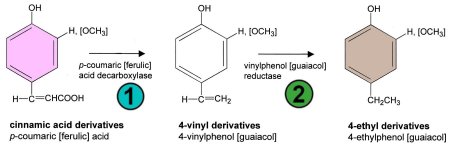Tempranillo
- "Spain's answer to Cabernet Sauvignon, the grape that puts the spine into so many good Spanish reds. Its grapes are thick-skinned and capable of making deep-coloured, long-lasting wines that are not, unusually for Spain, high in alcohol." - Jancis Robinson MW in her book "Guide to Wine Grapes
"
- "Spain's most important red grape variety, is grown all across that country and makes dark, fairly tannic wines with aromas that include berries and spice; very long aging, which was once the norm in Rioja, can mellow Tempranillo wines into the mild-mannered style." - Mary Ewing-Mulligan MW and Ed McCarthy in their book "Wine Style
"
- "Small-berried, thick skinned Tempranillo produces deeply colored, well-structured wine with the capacity to age well. In Rioja, it produces Spain's premier red wine, but it is increasingly planted elsewhere." - Vincent Gasnier MS in his book "A Taste For Wine
"
- Tempranillo is rarely produced as a varietal. It its is the most important part of the blend in Rioja, where it is blended with Graciano and Mazuelo (the name for the Carignan grape in the region). It also takes part of the blend of many Douro reds (and Ports) where it's known as Tinta Roriz.
- The wines generally have a medium body, with high acidity and medium-high tannins. When young the wines display lots of fruit (mostly strawberry and cherry). When they age, they show spices, plum, and vanilla (from the American oak barrels where they are usually aged).
- If from a cool area, these would be very usual aromas and flavors: Berries, bramble, damson, cherry, tea, bilberry, raspberry, dill, tobacco, citrus, herbs, and strawberry (the terms in bold being the most common).
- If from a warm area, these would be very usual aromas and flavors: Berry jam, blackberry, cassis, plum, and prune.
- In 1905, Frederic Bioletti brought Tempranillo to California where it received a cool reception not only due to the encroaching era of Prohibition, but also because of the grape's dislike of hot, dry climates. It was much later, during the 1980s, that Californian Tempranillo-based wine production began to flourish, following the establishment of suitably mountainous sites. Production in this area more than doubled since 1993. It still occupies a small acreage, however, some producers - most notably is "El Jefe" from Twisted Oak winery - is being very successful in the production of wines from this grape.
And don't forget... tomorrow is #Tempranilloday!!!
Cheers,
LA
http://www.thewinehub.com/
One of the pillars of TheWineHub is Wine Tourism. Whether you are a wine maker, or a wine drinker, we all enjoy having discoveries...
One of the pillars of TheWineHub is Wine Tourism. Whether you are a wine maker, or a wine drinker, we all enjoy having discoveries...
TheWineHub exists to help you with that.























